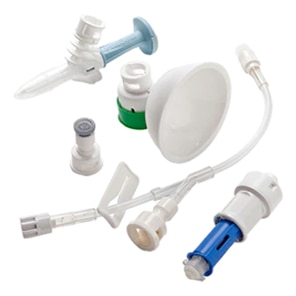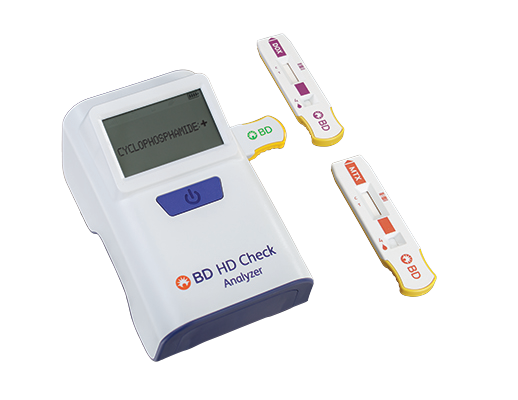Hazardous Drug Safety
The dangers of hazardous drug exposure―they are studied, documented and very real

- Overview
Overview
Every year more than 12.7 million health professionals in Europe, including 7.3 million nurses, are exposed to carcinogenic, mutagenic and reprotoxic hazardous drugs.1 This exposure is putting them at risk of both short- and long-term health issues such as headaches, hair loss, nausea, organ damage, reproductive problems,2,3 developmental impairment, genetic issues and even cancer.4
In order to address these risks healthcare facilities apply new standards, guidelines and recommendations and use the available safety resources in order to avoid potential risks associated with working with hazardous drugs. These recommend the use of closed system drug transfer device (CSTD) when compounding hazardous drugs when the dosage form allows, and CSTDs must be used when administering antineoplastic hazardous drugs when the dosage form allows.5,6,7
Why BD Hazardous Drug Safety?
When selecting a CSTD solution, you need to protect your team. But we know that is not your only concern. With the BD PhaSeal™ system, the Texium™ system and an array of services—all designed to help you reduce the risk of hazardous drug exposure, you can obtain a tailored solution that balances your needs for safety, efficiency and cost.
Related Products

BD PhaSeal™ Optima system
Safety. Performance. Ergonomics. Ease of use. We’ve advanced them all in the BD PhaSeal™ Optima CSTD.

BD PhaSeal™ system
The BD PhaSeal™ system is airtight and leakproof to protect your staff from hazardous drug exposure during drug preparation, administration and disposal.

BD® HD Check system
The BD® HD Check system rapidly and reliably detects hazardous drug contamination on multiple surfaces and locations.

Facilimix™ Compounding Solution
Helping you take the strain out of the hospital pharmacy.

Texium™ system
Protect clinicians and patients from exposure to hazardous drugs with a closed system.
Please note, not all products, services or features of products and services may be available in your local area. Please check with your local BD representative.
References
- Preventing the exposure of nurses and health professionals to hazardous drugs. Written by EFN on 20 June 2017. The Parliament Magazine. https://www.theparliamentmagazine.eu. Accessed August 26, 2020.
- Connor TH, McDiarmid MA. Preventing occupational exposures to antineoplastic drugs in health care settings. CA Cancer J Clin. 2006;56(6):354-365.
- Connor TH, Lawson CC, Polovich M, McDiarmid MA. Reproductive health risks associated with occupational exposures to antineoplastic drugs in health care settings: a review of the evidence. J Occup Environ Med. 2014;56(9):901-910.
- Hansen J, Olsen JH. Cancer morbidity among Danish female pharmacy technicians. Scand J Work Environ Health. 1994;20(1):22-26.
- U.S. Pharmacopeial Convention. <800> Hazardous Drugs—Handling in Healthcare Settings. https://www.usp.org/sites/default/files/usp/document/our-work/healthcare-quality-safety/general-chapter-800.pdf. Updated December 1, 2017. Accessed March 23, 2017.
- National Institute for Occupational Safety and Health (NIOSH). 2004 “NIOSH Alert: Preventing Occupational Exposures to Antineoplastic and Other Hazardous Drugs in Health Care Settings”. Available at: http://www.cdc.gov/niosh/docs/2004-165/pdfs/2004-165.pdf. Accessed August 26, 2020.
- ISOPP Standards of Practice - Safe Handling of Cytotoxics; Connor T. et al.; Journal of Oncology Pharmacy Practice 2007, 13, 1.
BD-20816
